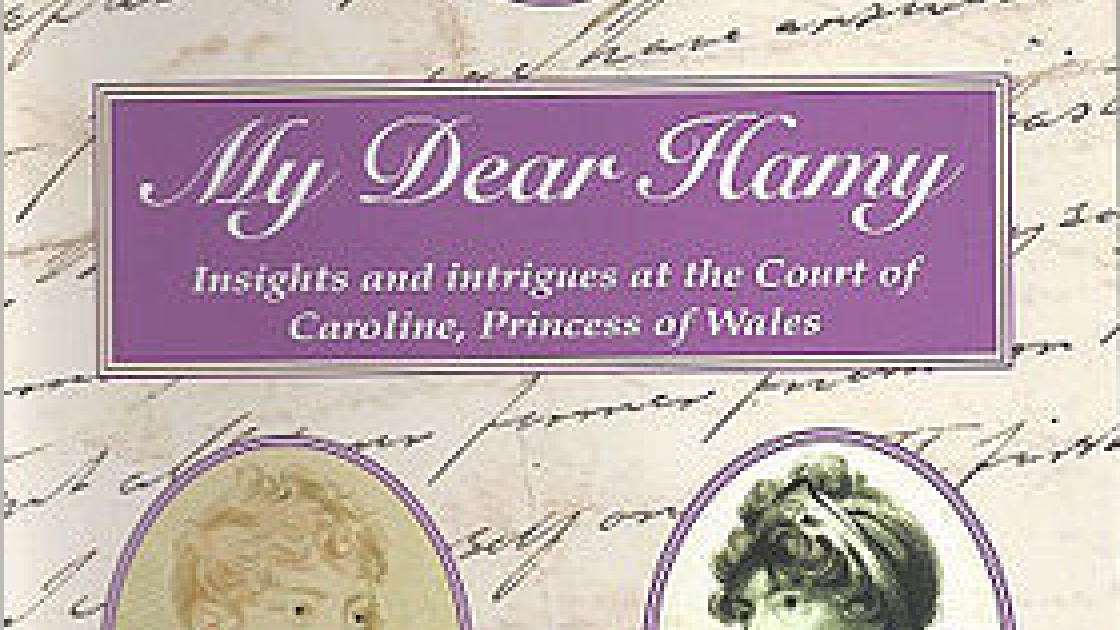
Breadcrumb
My Dear Hamy, by Lord Thomas of Gresford (m. 1955)
Published:
02 December 2019
The excitement of history rather escaped me in my days at Peterhouse, notwithstanding the glittering array of historians: Butterfield, Knowles, Postan, Wormald and my tutor, Denis Mack Smith. I was struggling with the Lesbiorum poetarum fragmenta of the classicist Sir Denys Page - when I wasn’t playing rugby or singing. Later, life under a wig in the Old Bailey was all about analysis, building scenarios of recent crimes from the mouths of live witnesses of varying loyalties to the truth and from documents which had not yet gathered dust – a stimulating occupation in itself.
Then I chanced upon an 1878 ‘Life of Princess Charlotte’, daughter of George, Prince of Wales and later Regent, and his estranged wife, Caroline of Brunswick, Princess of Wales. In the text were copies of half a dozen letters written to and from a Miss Anne Hayman – that was odd. I was living in the house Anne Hayman built for herself in Gresford in North Wales in 1806.
But where were the originals? I found myself trudging up the long staircase in the Round Tower of Windsor Castle. The archives produced a wealth of letters written by Anne to her parents at home about her experiences, and even more sent to her by Caroline herself, and in almost indecipherable scrawl, by little Charlotte. A few had found their way into earlier biographies but most had lain there un-transcribed and overlooked.
And so the journey began. Miss Hayman had in 1797 taken the position of Charlotte’s sub-governess at a sensible forty four years of age. She quickly found herself in sympathy with the child’s mother, so much so that the Prince of Wales spitefully sacked her after her three month trial period expired. Striking back, the Princess took Anne into her own household as her privy purse in charge of her personal spending. There she remained until Caroline, worn out with her husband’s neglect, her own scandals and the political machinations around her, left Britain for the continent in 1814. Throughout those years, Anne was a witness to the carryings on, the high jinks of Caroline’s little court. She devoted herself to protecting her wayward mistress from scandal, supporting her in her battles with her husband, and tried to cultivate a motherly instinct in her towards her little daughter. They became great friends.
The Earl of Minto, a diplomat and later Governor General of India, was Anne’s accomplice in trying to advise Caroline. What excitement there was for me to find their long and coded letters to each other in the National Library of Scotland in Edinburgh in a closed blue file marked “Secret - Princess of Wales”.
Evidence from original manuscripts far and wide, in other National and University Libraries, including Cambridge, and dug out of national and local archives, led me to some interesting and novel speculations. When did she first meet her lover, the dashing Sir Sidney Smith, the soldier who turned Napoleon back from his Middle East expedition at Acre? Had she borne his son years earlier as a teenager in Brunswick? Who was William Austin, the baby Caroline nurtured to manhood? Was the Delicate Investigation into her conduct in 1805 a fair and just proceeding? Did Sam Whitbread the brewer, and Henry Brougham take up her cause in 1812 to exploit her personal popularity for their own political advantage?
Did she deserve to win her trial for adultery in the House of Lords? And Princess Charlotte, presumptive heir to the throne – why did she throw over the Prince of Orange, outrage her father, and marry Leopold of Saxe-Coburg? Why was she allowed to die in childbirth? Why did her doctor commit suicide a week later?
Research breathes life into these figures, clarifies their motives, makes us share their sorrows and their joys. I find I really like Caroline, feisty, outrageous and funny but in the end, defeated. George was hopeless as a husband and father and at ease only with motherly women and the circle of cronies who spent the money he did not have. Charlotte should have been Queen but for tragic neglect – there would never have been a Victoria. Anne herself was the voice of common sense, enjoying her friendships with leading politicians, with the painter Sir Thomas Lawrence and Sir Walter Scott, and acting as a shrewd marriage broker for her friends and relations.
I cannot match the great Peterhouse historians but my own attempts prove to me that history is truly fascinating.
Martin Thomas (Lord Thomas of Gresford QC - matric 1955) is Chairman of the Peterhouse Society and an Honorary Fellow. For more about his book, see the website www.mydearhamy.com

